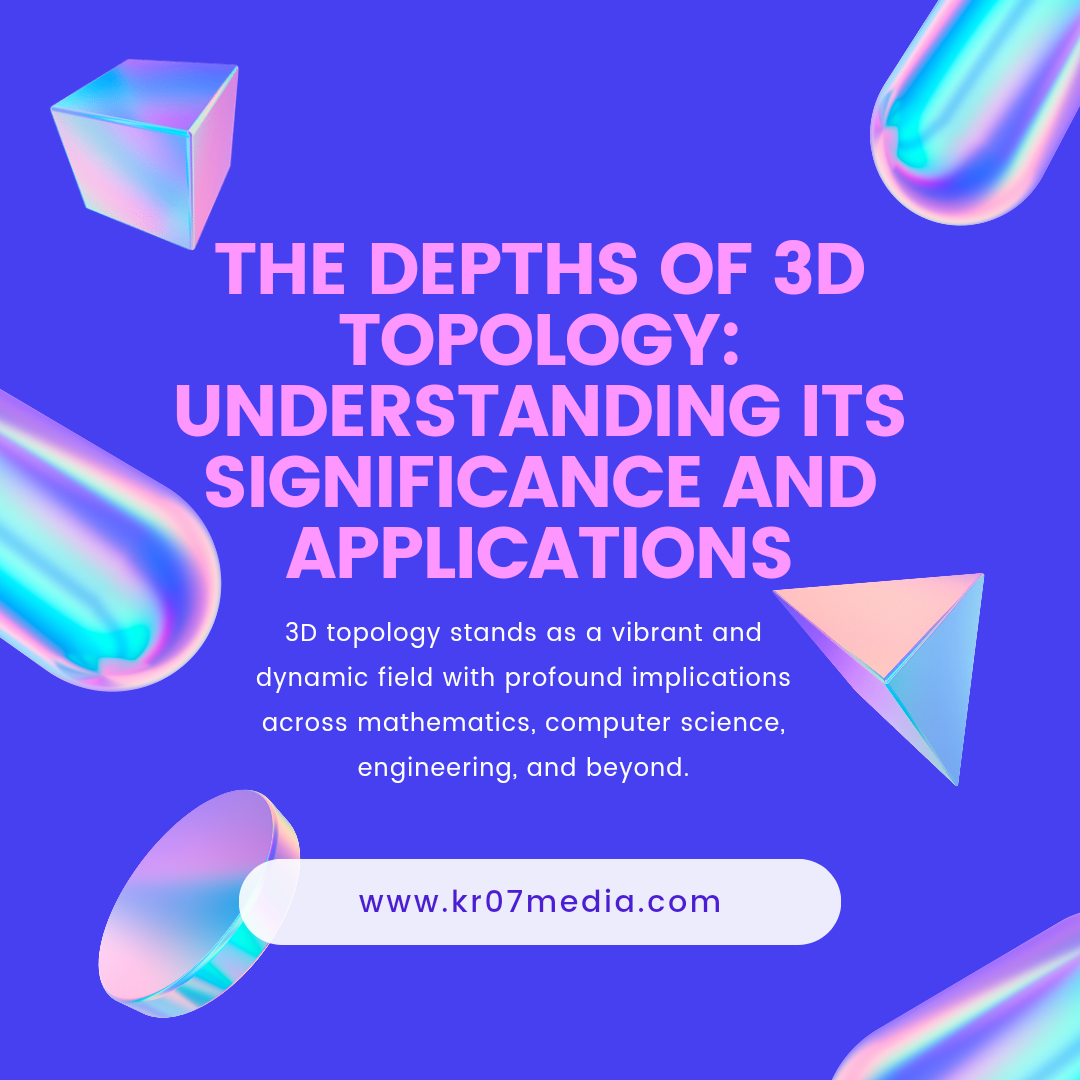In the realm of mathematics and computer science, topology serves as a foundational concept that enables us to understand the properties of geometric shapes and spaces. While the study of 2D topology has been well-established, the exploration of 3D topology opens up a fascinating world of complex structures and intricate relationships. In this article, we delve into the realm of 3D topology, unraveling its significance, applications, and implications across various domains.
Understanding 3D Topology:
Topology, in its essence, deals with the study of spaces and shapes that remain unchanged under continuous transformations such as stretching, bending, or twisting. In three-dimensional space, topology explores the properties of shapes without being concerned with their exact measurements, angles, or distances. It focuses on understanding the fundamental features that persist despite deformations.
Key Concepts in 3D Topology:
Manifolds:
In 3D topology, manifolds serve as central objects of study. These are spaces that locally resemble Euclidean space, meaning they appear flat when observed closely. Manifolds can be classified based on various properties such as orientability, compactness, and dimensionality.
Surfaces:
Surfaces are perhaps the most tangible examples of 3D topology. From spheres and tori to more exotic surfaces like the Klein bottle, understanding their properties provides insights into the broader field of topology.
Knot Theory:
Knot theory is a branch of topology that deals with the study of mathematical knots. In 3D topology, knots are represented as closed loops embedded in three-dimensional space. Understanding knot theory is crucial in various fields including biology, chemistry, and physics.
Applications of 3D Topology:
Computer Graphics and Animation: In the realm of computer graphics, 3D topology plays a vital role in modeling and rendering complex shapes and surfaces. Techniques such as surface reconstruction, mesh generation, and subdivision surfaces rely heavily on principles from 3D topology.
Robotics and Motion Planning:
For robots operating in three-dimensional environments, understanding the topology of the workspace is essential for efficient motion planning and obstacle avoidance. 3D topology aids in the analysis of robot configurations and the determination of feasible paths.
Material Science and Engineering:
In material science, understanding the topology of three-dimensional structures at the molecular level is crucial for designing novel materials with specific properties. Topological analysis helps researchers characterize the connectivity and arrangement of atoms within a material.
Medical Imaging and Visualization:
In fields such as medical imaging and visualization, 3D topology facilitates the analysis of complex anatomical structures. Techniques like topological analysis of volumetric data aid in the identification of abnormalities and the planning of surgical procedures.
Challenges and Future Directions:
While 3D topology has already found extensive applications across various domains, several challenges and avenues for further research exist. Enhancing computational techniques for analyzing and manipulating three-dimensional shapes, developing robust algorithms for topological data analysis, and exploring the connections between 3D topology and quantum physics are just a few areas ripe for exploration.
Conclusion:
In conclusion, 3D topology stands as a vibrant and dynamic field with profound implications across mathematics, computer science, engineering, and beyond. By understanding the underlying principles of 3D topology and harnessing its power, researchers and practitioners can unlock new frontiers of innovation and discovery in the ever-expanding landscape of science and technology.



